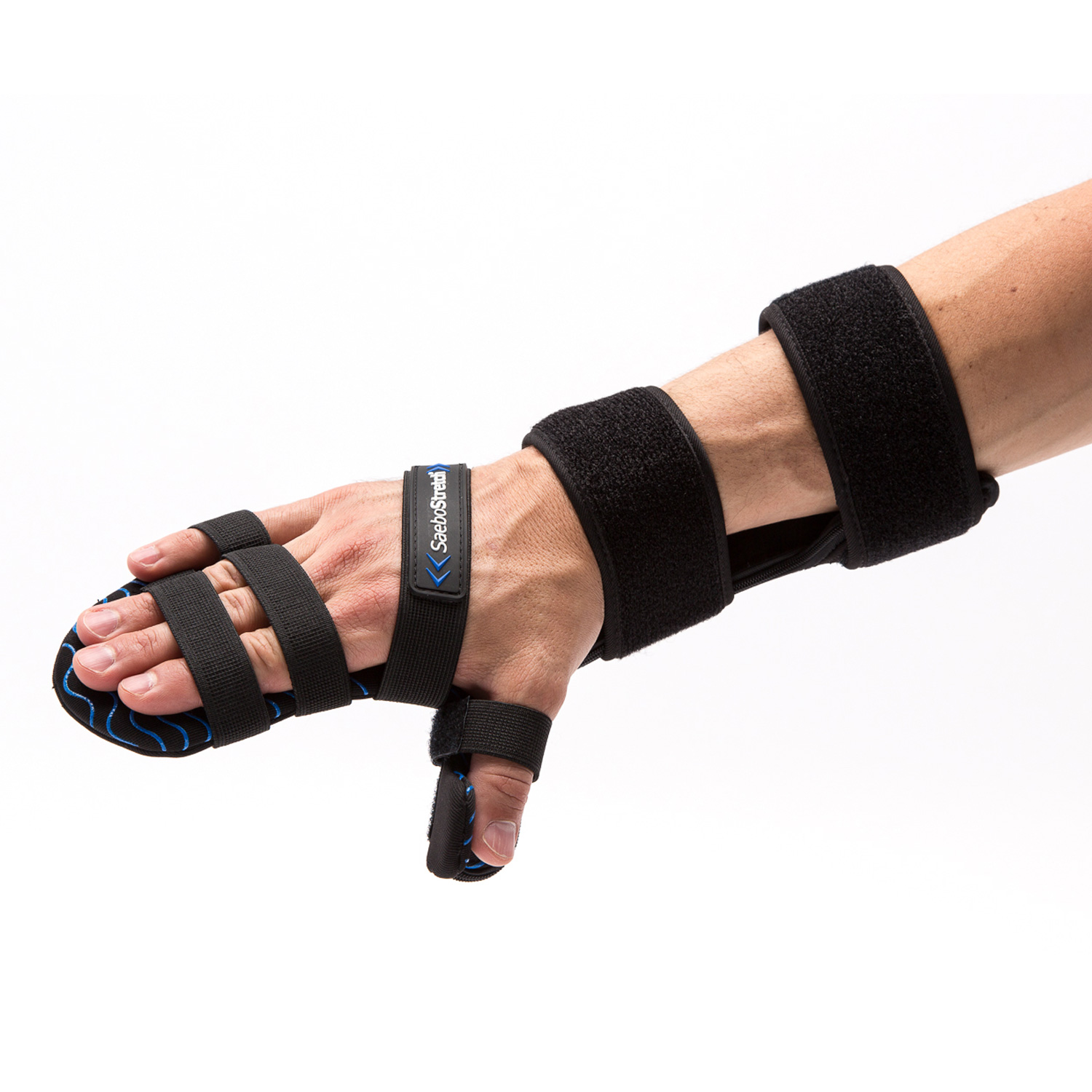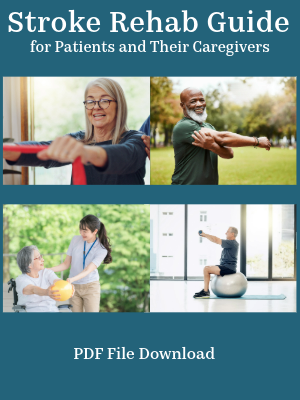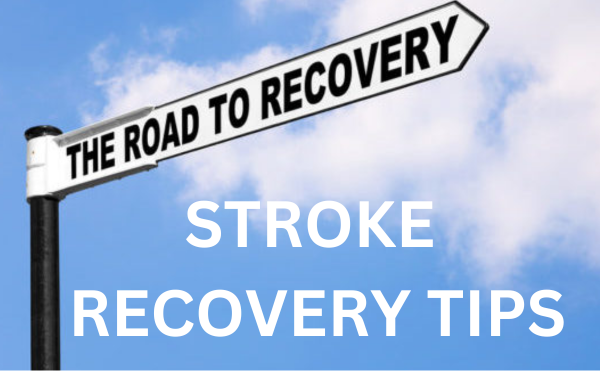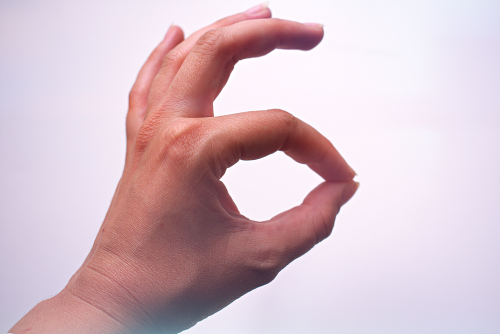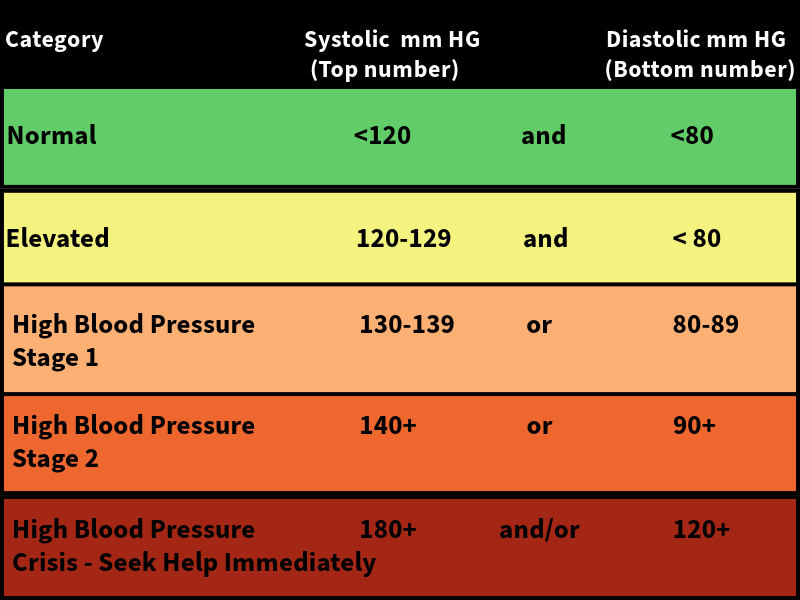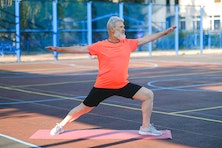Spasticity After Stroke
Spasticity is a velocity-dependent increase in muscle tone in response to passive movement. In simple terms, this means the faster you try to move a spastic arm or leg,the more there will be an increase in muscle tone and resistance to being moved.

Hypertonicity is a term often used interchangeably with spasticity; however, hypertonicity is resistance to passive movement and not dependent on velocity. It can be present with or without spasticity and vice versa.
Volitional movement (the ability of a person to move his or her own limb) is not directly related to spasticity or hypertonicity and is not considered when measuring them. Furthermore, do not assume that your volitional movement is impaired by spasticity. There is much confusion in this area, but the important thing to know is that you can still work on volitional movement regardless if you have high, moderate or no spasticity.
Muscle tightness or contractures can occur after stroke. Though spasticity has been shown to have a correlative relationship with contractures, there is no conclusive evidence that spasticity causes contractures. It is thought instead that contractures may occur because of immobilization and lack of muscle activity. A contracture is a chronic shortening of muscle tissue that limits joint range of motion and is resistant to stretching. The contracted limb cannot be moved through a normal range of motion and this can interfere with activities of daily living such as grooming, dressing and bathing and can cause problems with balance.
Treatment of Spasticity
Initial treatment may begin during therapy sessions with the physical or occupational therapist performing stretches, using myofascial release techniques, and teaching the stroke patient self stretching and range of motion exercises. If appropriate, resistance exercises may be added. These types of treatments are more directed at improving mobility and preventing contractures rather than directly treating spasticity.
Other treatments may be initiated by a physician and include oral medications, botox injections and intrathecal Baclofen therapy (Baclofen pump). If contractures form, and there is excessive pain and dysfunction, physicians may perform surgery to lengthen tendons.
Stretching and BracesStretching is used to help maintain joint range of motion. Braces or orthoses are are often prescribed to prevent contractures, decrease excessive tone, prevent skin breakdown, lengthen shortened tissues, increase or maintain range of motion, decrease pain, and properly position joints. Research studies have not shown that static splinting is effective in decreasing tone or improving range of motion in stroke patients. There is less research on the efficacy of dynamic splinting. Some therapists like to use the Saebo Stretch dynamic splint. Regardless of what type of splint or brace is used, it should always be fitted properly. A poor fitting splint can definitely cause more problems than good. |
Saebo Stretch |
Oral Medications
Medicines for treatment of spasticity may include oral Baclofen, benzodiazepines, Dantrolene sodium, and imidazolines. Baclofen is a muscle relaxer that acts on the central nervous system to relax muscles. Baclofen decreases stretch reflexes, the rate of muscle spasms and clonus, pain, tightness, and improves range of motion. Side effects can include sedation, dizziness, muscle weakness, urinary frequency, drowsiness, confusion, nausea, seizures, constipation, dyspnea, impaired vision, fatigue, and edema. The efficacy of oral Baclofen in stroke patients has not been established. Baclofen appears to have limitations with spasticity due to stroke because of its limited ability to cross the blood-brain barrier and the amount of oral Baclofen needed to reduce spasticity causes adverse side effects
Benzodiazepines are muscle relaxers that acts on the central nervous system to temporarily relax muscles. Side effects from benzodiazepines may include sedation, low blood pressure, fatigue, nausea, impaired memory, depression, incoordination, and balance problems.
Dantrolene does not act on the central nervous system but instead acts directly on skeletal muscle blocking the signals to muscles that cause them to contract. Dantrolene decreases muscle tone, clonus, and spasm. Side effects can include drowsiness, dizziness, weakness, malaise, fatigue, liver damage, nausea and diarrhea. Patients who take Dantrolene should be regularly monitored for liver function. Dantrolene is less likely to cause problems with confusion and cognition than are benzodiazepines or oral Baclofen.
Imidazolines work on the central nervous system to reduce spasticity and typically cause less weakness than do diazepines which can be important with a patient who needs to retain strength. Side effects of imidazolines may include sedation, hypotension, dry mouth, dizziness, renal impairment, and psychosis.
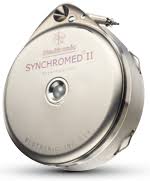 |
Baclofen PumpAnother treatment for spasticity is Intrathecal Baclofen Therapy which is a pump that is surgically implanted and releases Baclofen into the subarachnoid space of the spinal cord. Patients who benefit from the effects of oral Baclofen but cannot tolerate the side effects may benefit from intrathecal Baclofen. |
The drug level is relatively constant and side effects are usually minimal because the drug is delivered directly to the intended site rather than circulating through the body. Complications can occur related to the pump and may include infection, catheter dislocation or kinking, impaired wound healing, and pump malfunction. Possible side effects can include headaches, nausea, vomiting, excessive weakness, and transient urinary retention. Intrathecal Baclofen should not be stopped abruptly as serious problems can occur. One should be aware of Baclofen withdrawal symptoms when discontinuing Baclofen treatment.
Chemodenervation with Botulinum Toxin or PhenolBotulinum toxin (Botox, Myobloc, & Dysport) is injected into the muscle and temporarily stops the connection between nerves and muscles, causing spasms to stop. The effects usually occur within 24 to 72 hours with maximum effect seen in about 2 weeks. The effects last from about 12 to 16 weeks. |
 |
Adverse reactions can include nausea, fatigue, bronchitis, muscle weakness and limb pain. Botox has been approved by the FDA for treatment of spasticity in the elbow, wrist, and fingers in stroke patients (specifically the flexor muscles). Botox comes with a warning that it is produced from the same bacterium that causes botulism and has the potential to spread beyond the treated area and cause symptoms similar to botulism. These symptoms can include life-threatening problems with breathing and swallowing.
A phenol injection can also provide relief from spasticity. Phenol destroys the nerve pathways to the involved muscle group, blocking nerve impulses to the muscle. The relief can last from several weeks to 6 months or more. Side effects can include pain and burning/tingling and swelling of the injected area.
Surgical Treatments
Surgical options are usually last resort treatments. Tendons and/or muscles can be released, lengthened or transferred. Muscles can also be denervated (nerve supply is cut off). Surgical options should be discussed with your physician when other techniques have failed and there is sufficient reason to warrant such treatment (pain, severe deformity, inability to complete basic hygiene, good prognosis for functional improvement, etc.)
Get Our Stroke Rehab Guide

Our stroke rehab guide is designed specifically for patients and caregivers. It's in pdf format and can be immediately downloaded. It includes about
- Stroke Definition & Causes
- Stroke Treatment
- Rehabilitation Information for Physical, Occupational and Speech Therapy
- Exercise pictures
- Q&A from patients and caregivers
- Adaptive Equipment & Techniques
- How to Prevent Another Stroke & More!
Medical Disclaimer: All information on this website is for informational purposes only. This website does not provide medical advice or treatment. Always seek the advice of your physician or other healthcare provider before undertaking a new healthcare or exercise regimen. Never disregard professional medical advice or delay seeking medical treatment because of something you have read on this website. See the disclaimer page for full information.
- Home
- Spasticity
